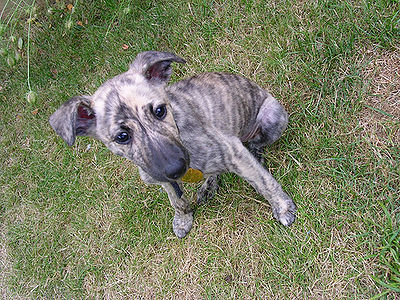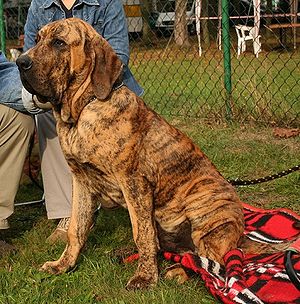
What is the origin of the Laika?
The Laika is also known as the Russian Spitz and is in that family of dogs. Laika means “barker.” Laika was the name of the first dog in space and many Russian dogs have that name. There are six different types of Laikas which will be described here.
What does the Laika look like?
All Laikas have weather resistant coats. Undercoats are thick and woolly. The fur is ticked. All have strong muscular necks. The tail is feathered and curled over the back when the dog is working.
East Siberian Laika – males are 22-26 inches tall, females 21-24 inches tall. Weight is 40-50 lbs. This Laika was developed from sled and hunting dogs of the High Arctic. They are calm, good-natured and obedient.
West Siberian Laika – specializes in hunting ermine and sable. It is usually the color of wolves, sometimes darker or more reddish or white with patches.
Russian – European Laika – found close to the Finnish border. It was once considered the same breed as Karelian Bear dog from Scandinavia until the 1940s. The Russian breed is taller, more powerful and more aggressive. It is used to hunt large game such as bear, deer and wolf.
Karelo – Finnish Laika – (Karelskaja) one of the smaller hunting dogs. The coat is fawn or black with small white markings on the head, chest, legs and tail.
Notheasterly Herding Laika – used as a sled or to transport mail, medicine, etc. The coat is ticked and weather resistant. Colors are solid white or black over reddish gray to black and tan or pied. Tails can be sickle shaped, curled or straight.
Nenets Herding Laika – (Nenets Laika, Reindeer Herding Laika) a medium size dog named for ancient nomads, the Nenetsy. Height is 16-18 inches tall, weight, 40-50 lbs. Coat colors are grey, tan, black or white. It is very similar to the Samoyed in looks.
Most Laikas are affectionate, loyal, sometimes one-man dogs. They are wary of strangers. With minimum care they can withstand very harsh conditions.
Possible Health Issues
Umbilical hernia, monorchidism (one testicle), epilepsy, eye problems.
Video
- Akbash Dog
- Alaskan Malamute
- Anatolian Shepherd Dog
- Appenzell Mountain Dog
- Belgian Malinois
- Boxer
- Burnese Mountain Dog
- Canaan Dog
- Chinook
- Deutscher (German) Pinscher
- Doberman Pinscher
- Dogue de Bordeaux
- Estrela Mountain Dog
- German Spitz (Giant, Standard, Toy)
- Giant Schnauzer
- Great Dane
- Greater Swiss Mountain Dog
- Greenland
- Irish Red & White Setter
- Kai Ken
- Korean Jindo Dog
- Kuvasz
- Leonberger
- Newfoundland
- Norwegian Elkhound
- Rat Terrier
- Rottweiler
- Saint Bernard
- Samoyed
- Siberian Husky
- Standard Schnauzer
- Tibetan Mastiff
- Australian Cattle Dog
- Australian Kelpie
- Australian Shepherd
- Bearded Collie
- Beauceron
- Belgian Sheepdog – Groenendael
- Belgian Tervuren
- Bergamasco
- Berger Picard
- Blue Lacy
- Border Collie
- Bouvier des Flandres
- Briard
- Cardigan Welsh Corgi
- Catahoula Leopard Dog
- Collie
- English Shepherd
- Entlebucher
- Finnish Lapphund
- German Shepherd
- Hovawart
- Icelandic Sheepdog
- Lancashire Heeler
- Miniature American Shepherd
- Mudi
- Old English Sheepdog
- Pembroke Welsh Corgi
- Polish Lowland Sheepdog
- Puli
- Pumi
- Pyrenean Shepherd
- Shetland Sheepdog
- Standard Schnauzer
- Swedish Vallhund



